No. 100 (Bomber Support) Group
No. 100 Group RAF was a specialist organisation formed on 11 November 1943 to counter enemy radar and electronic defences against Bomber Command operations. The group controlled eight airfields with 260 aircraft, 140 of which were various marks of de Havilland Mosquito night fighter intruders and the remainder being 80 Handley Page Halifaxes, 20 Boeing B-17 Fortresses and 20 Consolidated B-24 Liberators, all the "Heavies" carrying electronic jamming equipment.
The end of January 1945 saw the beginning of large scale use of land-based jamming on the continent, virtually in the Nachtjagd's back yard, by No. 80 Group, effectively increasing the range of both monitoring and jamming. As the Allies advanced, these ground units also moved forward, however unfortunately it didn't stop the Nachtjagd having occasional successes during February and March that cost the crews of Bomber Command dearly.
The special duties group role gradually evolved but its motto of "Confound and Destroy" sums up its fundamental raison d'être.
The Group's aims were as follows:
-
to deny the enemy use of ground controlled interceptions
-
to deny the enemy early warnings of raids
-
to prevent the enemy obtaining a clear picture of operations over his territory
-
to make things as difficult as possible for the enemy night fighter attempting to carry out interceptions of bombers
-
to get enemy night fighters airborne unnecessarily by means of feint attacks involving him in waste of effort and material and also conditioning him to certain fighter deployments from the point of view of future targets
Its bases were all in East Anglia and comprised the following squadrons, aircraft flown in this period and duties:
23 Sqdn and Mosquito VI. Bomber support duties
25 Sqdn and Mosquito VI Bomber support duties
85 Sqdn and Mosquito XXX Bomber support duties
101 Sqdn and Lancaster BI ABC radio jamming and bombing
141 Sqdn and Mosquito XXX Bomber support duties
151 Sqdn and Mosquito XXX Low level intruder and freelance patrols
157 Sqdn and Mosquito XXX Bomber support duties
169 Sqdn and Mosquito XIX Bomber support duties
171 Sqdn and Halifax BIII Jamming duties
192 Sqdn and Mosquito II Jamming duties
199 Sqdn and Halifax BIII Jamming duties
214 Sqdn and Fortress III Jamming duties
223 Sqdn and Liberator BVI and Fortress II and III Jamming duties
239 Sqdn and Mosquito XXX Bomber support duties
307 Sqdn and Mosquito XXX High and low level patrols
406 Sqdn and Mosquito XXX Intruder sorties and freelance patrols
462 Sqdn (RAAF) Halifax BIII Jamming duties
515 Sqdn and Mosquito VI Bomber support duties
803rd Bombardment Sqdn and B24H and J Jamming duties
858th Bombardment Sqdn and B24H and J Jamming duties
A selection of drawings of 100 Group aircraft, all from Martin Streetly's "Confound and Destroy"
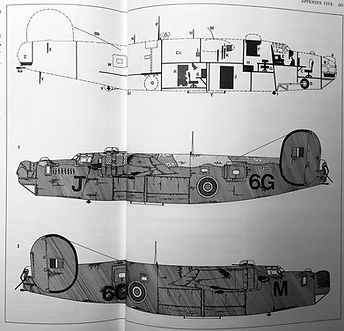
Liberator
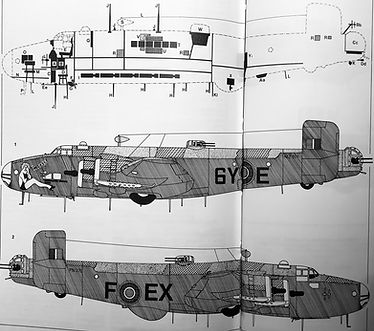
Halifax
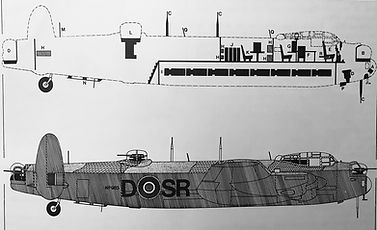
Lancaster
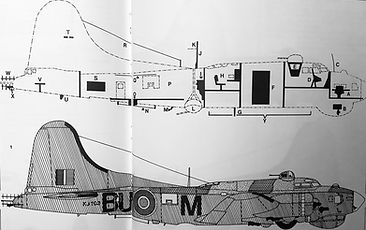
Fortress
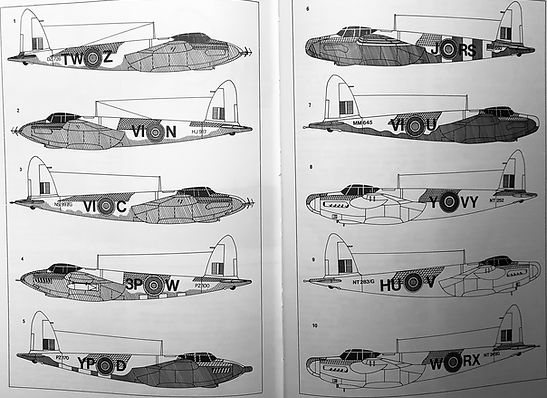
Mosquito

85 Squadron Mosquito (l), 214 Squadron Fortress (r), 223 Squadron Liberator (below)


At the end of 1944 there was an assessment of 100 Group's contribution to the bomber offensive:
Throughout the year the Fortresses of 214 Squadron and later, the Liberators of 223 Squadron had been plugging away, accompanying and "Jostling" for very major bombing raid. BY December, all were able to be of still greater assistance, being fully equipped with CARPET (anti Wurzburg), PIPERACK (anti-SN2) besides JOSTLE IV (anti H/F and VHF). Mosquitoes of 192 Squadron began operating this month as jammers, their role being a dual one. They flew to target areas on routes which took them well clear of the Main Force and on the way made recordings for "Y" service of enemy R/T traffic. Arriving at the target area they jammed with PIPERACK the enemy airborne interceptors and they stayed there till well after the attack, thus covering the withdrawal of stragglers.
JOSTLE emitted multi-directional radiations jamming the wavelength of the enemy radio control to their fighters.
PIPERACK was a rearward facing airborne jammer protecting the bomber force from the enemy airborne interception equipment known as SN2.
MANDREL was a jammer used against the enemy's long range Freya radar system which was capable of picking up the bomber stream very early on as it started to assemble and approach Europe.
CARPET was used against the ground-based Wurzburg radars which the enemy used for controlling its anti-aircraft guns, for ground control interceptions and for watching the coasts.
In the thrust and counter-thrust of this airborne war, there had been, since the earliest days, a continual evolution in the battle of tactical wits and electronic aids to ensure the safety of the crews and the success of their missions
Bomber Command had developed a pattern of sending in a shallow penetration raid for example to the Ruhr, followed by the main raid of much deeper penetration such as Berlin. Often the deeper penetration raids would enter Germany either from the south or via Denmark and the Baltic in the north. With the southern incursions, there were a number of occasions when deep penetrations were made without a huge Nachtjagd response because either resources were focused on another raid or the stream size and course wasn't fully appreciated by the controllers.
However it is obvious that the Bomber Command planners occasionally tried this tactic too often so that what may have worked initially, later failed with the result that Luftwaffe controllers could successfully direct the night fighters to infiltrate the bomber stream with high resultant losses. But generally, it appears that the major difficulty was with the controllers correctly appreciating the main raids in time to effect an interception. Very rarely during 1945 was interception in force made before the bombers reached the target (being mostly either over the target or along the return route) but when it did happen the bomber losses were significant.
One 100 Group report states that German night fighters were known to be controlled on 16 different wireless telegraphy (W/T) frequencies - 6 high frequency channels (4 of which were jammed with both 'Drumstick' and 'Jostle', and one jammed by 'Jostle' alone) and 10 medium frequency channels (six different radio beacons were jammed with 'Fidget', two other broadcasts were jammed with 'W/T Dartboard'). Radio Telephony (R/T) channels were jammed via 'Corona' and 'Special Tinsel'.
No. 80 Wing, based on the ground in continental Europe, was also active in monitoring and jamming German radars and communications.
With thanks to Rod Mackenzie for much of the above.